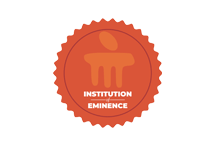Summary of - A Novel Method of Spinal Accessory Nerve Banking Using Silicone Catheter for Functioning Free Muscle Transfer
Document Type
Article
Abstract
The spinal accessory nerve (SAN) is often used as a donor for gracilis functioning free muscle transfer (FFMT) in cases of global palsy. However, exploring a previously operated site can be challenging due to inflammation, adhesions, and scarring. Banking the SAN and transposing it subcutaneously away from the primary reconstruction site is crucial. Creating an environmentally inert barrier between the nerve and its surroundings can prevent adhesion challenges and avoid scarring.
Research goals and objectives
The goal of this study was to develop a method to reduce operative time, by providing ease of dissection and exploration, in cases of global brachial plexus palsy patients , on staged reconstruction with FFMT at a later date.
Methodological approach
This technique was in early global brachial plexus palsy cases, where intercostal nerves are used to reanimate the biceps, SAN is retained for second stage FFMT, and a single-team approach is employed.The standard treatment, in our center , for global palsy involves using a sural nerve graft to reconstruct the plexus, focusing on the upper trunk, middle trunk, and suprascapular nerves for shoulder and elbow stability. Intercostal nerves are used to reanimate the biceps and pectoralis major, and shoulder arthrodesis is performed ,at a later date, for stability(if required). The SAN is then banked for reanimating the gracilis (FFMT) to power finger flexion
Technique
The brachial plexus is explored using a supraclavicular approach, tracing the SAN 2-3 cm deep to the trapezius muscle. The SAN is cut distally ,after supplying upper trapezius, tunneled through a silicone Foley catheter, and brought near supraclavicular region ,and tagged to maintain length. The banked SAN is used for reanimation of gracilis during FFMT without disrupting previous sites.
Results and Discoveries
This technique was used in two patients with global palsy. The donor nerve was identified with minimal fibrosis and smooth dissection was facilitated by a silicon catheter. The distal end of the nerve was preserved, and the operating time was reduced by an hour compared to nonbanked cases ,with single team approach.
Publication date
Techniques in Hand & Upper Extremity Surgery
Volume 27, Number 4, December 2023
Publication Date
2023
Recommended Citation
Pai G, Mithun; Bhat, Anil K.; and M. Acharya, Ashwath, "Summary of - A Novel Method of Spinal Accessory Nerve Banking Using Silicone Catheter for Functioning Free Muscle Transfer" (2023). Open Access archive. 9467.
https://impressions.manipal.edu/open-access-archive/9467


